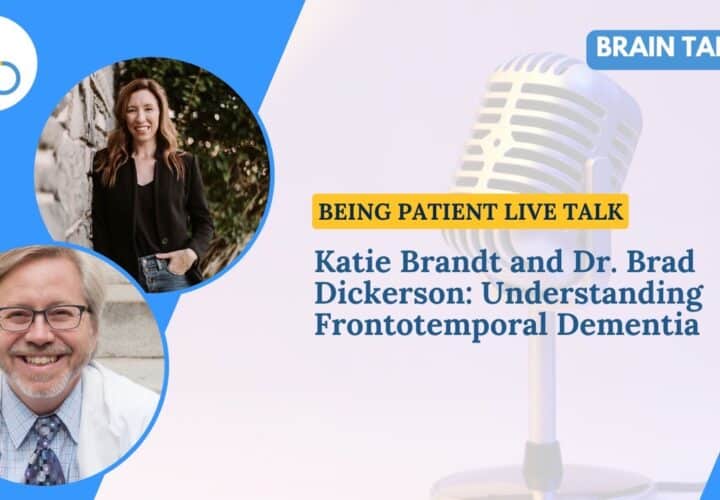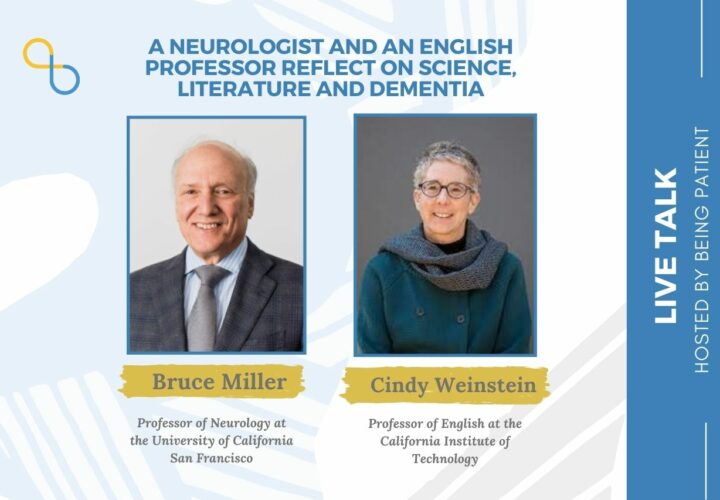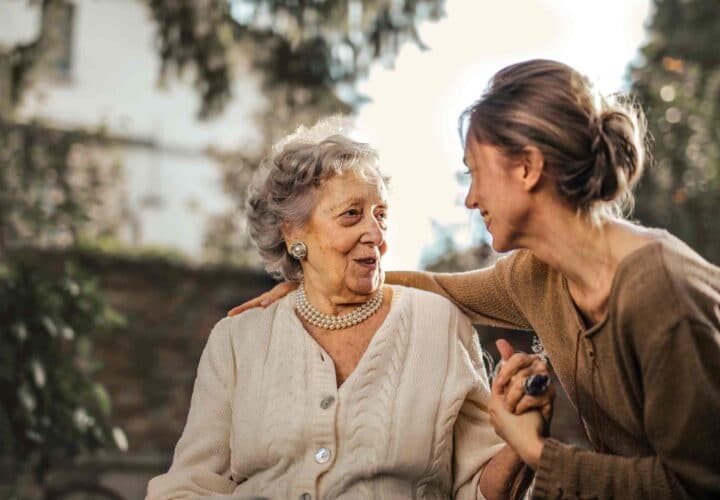Aphasia — a condition brought about by brain damage or dementia — can mean loss of access to words. But with the right approach, you can help people with aphasia communicate.
Aphasia was in the news recently when the family of actor Bruce Willis announced he was stepping back from his career due to communication difficulties. Also recently, performer Lady Gaga was praised for her supportive approach to co-presenting an Oscar with Hollywood great Liza Minnelli, who has previously battled encephalitis and expressed confusion about what to say onstage.
Speech pathology professor Deborah Hersh
at Australia’s Curtin School of Allied Health
shares strategies to support individuals
living with speech loss from aphasia.
People living with aphasia say lack of awareness of the condition is one of the biggest barriers they face. Two high-profile examples of communication difficulties – one of them involving an aphasia diagnosis and one featuring similar symptoms – present an opportunity.
Aphasia is the loss of access to language due to brain damage, most commonly following stroke but also caused by traumatic brain injury, tumors, or a type of dementia called primary progressive aphasia. It is a frustrating and isolating condition, derailing conversations and impacting relationships with family and friends.
But there are ways to help those we love to communicate. Here are five ideas to keep in mind.
How to talk to someone with aphasia
1. Acknowledge capacity
Aphasia affects language, not intellect. Aura Kagan from Canada’s Aphasia Institute coined the phrase “I know that you know.” This was a breath of fresh air for people who were used to being treated as lacking capacity because they couldn’t find the words to express themselves.
Acknowledging that people with aphasia remain competent and intelligent lays the groundwork for productive and respectful exchanges.
What's it really like to live with aphasia?
You can help make their lives easier.
Get the free tools here:https://t.co/dfnjzZaQx5#aphasia #aphasiaawareness pic.twitter.com/31cscU2bni— Aphasia Institute (@Aphasia_Inst) November 25, 2021
2. Partner up
Recognize the responsibility for satisfying conversations does not just rest with the speaker. It is equally shared by those communicating with them. Evidence shows that when communication partners are given information, strategies and a little practice, they can enable much better conversations.
Communication partner training is now commonly offered by speech pathologists. It is also being explored for use with people who have dementia.
Key strategies in communication partner training include:
- speaking with your usual tone and volume
- acknowledging communication blocks or problems and trying to respectfully repair them, rather than ignoring them
- writing down key words to keep chat on track
- drawing or using gestures – say, pointing to an object or person
- using yes/no questions to confirm meaning
- summing up what’s been said at regular points in the conversation.
3. Respect the human right to communicate
Communication is an essential and integral part of being human. We express our personalities, histories, aspirations and achievements through spoken or written language. Communication is recognized as a human right, and without it, life quality suffers.
Humanizing our approach to aphasia – that is, attending to subtle and empathetic human needs, not just the basics of survival – has the potential to sustain and validate the person with aphasia and to transform health services.
This is like a lesson in how to facilitate older people while honouring who they are.
What a class act by @ladygaga with legend Liza Minnelli.
The conferred whispers of "I gotcha" "I know" picked up by the mikes make it especially touching.pic.twitter.com/2JOWyrTQxn— Naomi O'Leary (@NaomiOhReally) March 28, 2022
4. Ensure accessibility
Everything we do is mediated by language: reading the news, using public transport, buying a coffee, using a smart phone, chatting with colleagues or friends over lunch, negotiating bureaucracy, buying a ticket for a sports or music event.
Accessibility is about ensuring that how language is spoken, written or presented electronically does not exclude people with communication difficulties. Adjustments might moderate the speed, presentation or complexity of information.
Just as people who use wheelchairs should be able to expect ramp access instead of facing a flight of stairs, people with aphasia should be entitled to a communication ramp (another brilliant term from Aura Kagan) where a person or agency makes their verbal or written information aphasia-friendly. This may be particularly vital in healthcare contexts.
5. Include people in conversations and events
Inclusion is what keeps people buoyant and gives them opportunities to practice and improve their communication. Aphasia can be a lonely disorder but with communication supports, positive attitudes, friendship, meaningful activity, community aphasia groups and social opportunities, it doesn’t have to be. Don’t leave people out because you assume they might feel uncomfortable. Offer choices and they will tell you.
Awareness of aphasia is key. Despite being relatively common, the word aphasia is not well known, and it is hard to address something when you don’t have a word for it. Knowing the term helps but knowing how to help is even better.
You can find more information on aphasia, conversation partner training and community aphasia conversation groups online.
This article is republished from The Conversation under a Creative Commons license. Read the original article.





